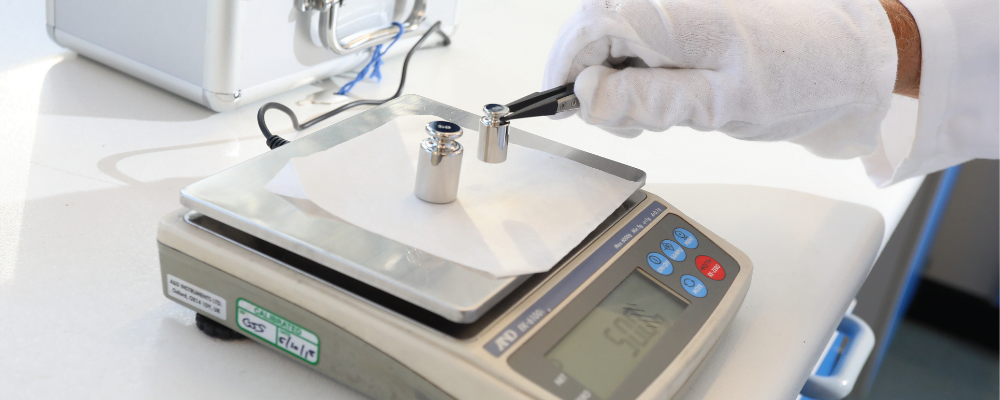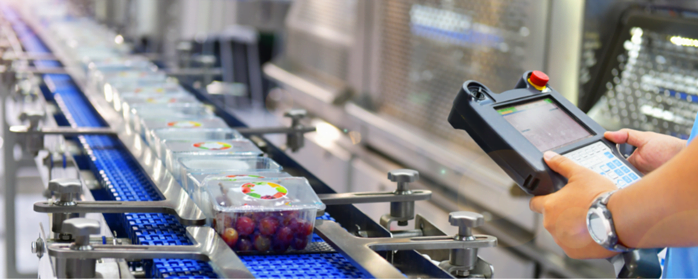A study by Vanson Bourne found that 70% of businesses were not aware of when their equipment was due for maintenance, an upgrade, or replacement. Furthermore, 82% of those companies suffered at least one incident of unexpected downtime resulting in the inability to deliver services to customers, loss of production time, and business1. With the risk of such damaging outcomes, we will look at preventative measures to help you safeguard your weighing equipment and your organisation.
What are the warning signs?
Several warning signs could indicate deterioration of your weighing equipment and trigger a need for urgent action to prevent downtime. A notable red flag is an increasing need for repairs as well as servicing and calibrations outside of your set schedule. In a best-case scenario, faults and out-of-tolerance results can be easily rectified by an engineer. However, if you have an older or a discontinued model of weighing equipment, it could be a matter of time before spares become difficult to source and repairs and servicing become uneconomical or impractical.
What preventative measures can be taken?
Several preventative measures can be put in place to avoid weighing equipment failures leading to expensive and unexpected downtime:
- Periodically test, monitor, and keep a record of your equipment’s performance in line with your standard operating procedures (SOPs). For example, is the equipment still performing at the speed required? Are any drifts in measurements within set tolerances when running in-house checks with test weights?
- Commission a weighing partner to implement a preventative maintenance programme. This includes routine servicing and calibrations of your weighing equipment at suitable calibration frequencies.
- Take time to understand how calibrations provide measurement confidence. This will keep you informed on how accuracy is tested and understand any anomalies.
- Always review calibration certificates and equipment condition reports provided by your weighing partner. By taking this step, you can proactively monitor your equipment’s accuracy, physical condition and recognise when a replacement is needed before its end of life.
Are there reactive measures to consider?
Despite preventative measures being in place, sometimes equipment can still fail. This can be due to accidental damage, misuse by an untrained operator, or an unexpected machine malfunction. Therefore, it is just as important to establish reactive measures to cater to the unforeseen. This can be as simple as consulting with a weighing partner such as Northern Balance, who can provide emergency call-out support as well as free equipment surveys with bespoke condition reports and replenishment plans that meet your technical requirements and budgets.
Top tips when purchasing weighing equipment
Consider the following points when selecting your equipment and provider:
- Are the equipment features fit for purpose? For instance, does it have suitable capacity, pan size, and resolution to meet your weighing requirements and regulations? Does it have the right communication capabilities, such as ethernet, printer, or USB outputs? Is it easy to operate and does it need a suitable Ingress Protection (IP) rating for the weighing environment?
- When was the equipment brought to market? Does the weighing equipment feature the latest technologies or is a more up-to-date solution available? How long will the equipment be supported?
- Are you buying refurbished? Check if a warranty is included and consider if the price is relative to buying new.
- Is financial support available? Government schemes such as the super-deduction tax break can help you save up to 130% on new weighing equipment
- Does your equipment require calibration certification? Certification gives you peace of mind, that your equipment is weighing accurately from day one. You can choose from UKAS or traceable calibrations depending on the requirements stipulated by your quality management system (QMS).
- Do you require equipment maintenance? If yes, then consider a weighing partner who can provide preventative and reactive maintenance options at times and localities suitable for your requirements. This will help to reduce any downtime and inconvenience resulting from sourcing ad hoc support.
Understanding early warning signs, proactively monitoring the performance of your equipment, and implementing preventative and reactive maintenance is crucial to safeguarding against equipment failure and unexpected costs. However, when things go off-plan and replacement equipment is the only practical option, keep in mind our top tips and contact our regional weighing experts for complimentary advice. This approach will help to ensure that you invest in weighing equipment that is the best fit and value for your operational requirements.
Sources
1 Wright, I (2017) ‘Human Error is Worse in Manufacturing Compared to Other Sectors’ [Online] Available at: https://www.engineering.com/story/human-error-is-worse-in-manufacturing-compared-to-other-sectors (Accessed 15th April 2021), paragraph 5





